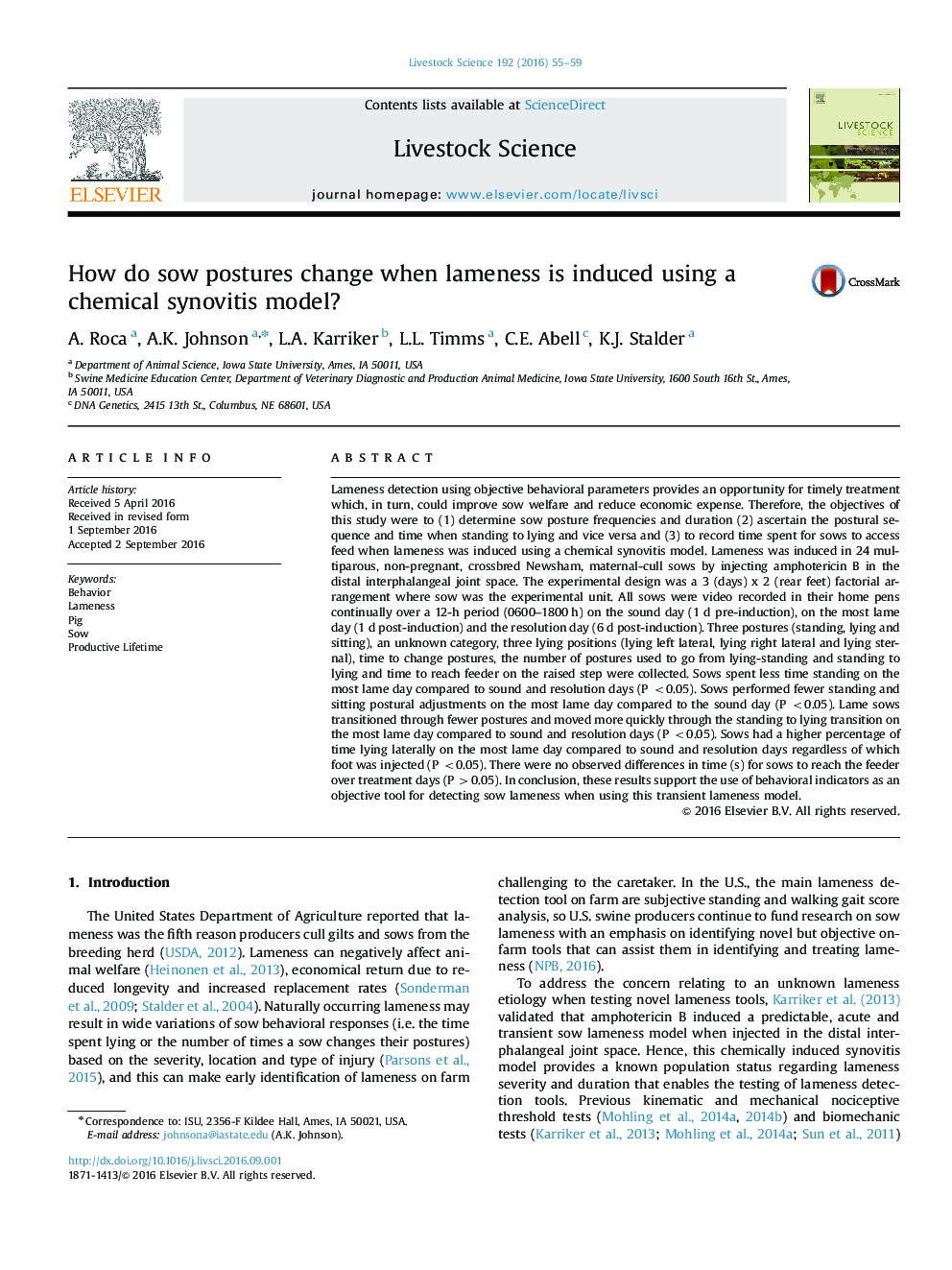| کد مقاله | کد نشریه | سال انتشار | مقاله انگلیسی | نسخه تمام متن |
|---|---|---|---|---|
| 8502130 | 1553940 | 2016 | 5 صفحه PDF | دانلود رایگان |
عنوان انگلیسی مقاله ISI
How do sow postures change when lameness is induced using a chemical synovitis model?
ترجمه فارسی عنوان
چگونه با استفاده از یک مدل سینووییت شیمیایی سبب ایجاد لنگش می شود؟
دانلود مقاله + سفارش ترجمه
دانلود مقاله ISI انگلیسی
رایگان برای ایرانیان
کلمات کلیدی
رفتار - اخلاق، لنگش، خوک، کاشت طول عمر محصول
موضوعات مرتبط
علوم زیستی و بیوفناوری
علوم کشاورزی و بیولوژیک
علوم دامی و جانورشناسی
چکیده انگلیسی
Lameness detection using objective behavioral parameters provides an opportunity for timely treatment which, in turn, could improve sow welfare and reduce economic expense. Therefore, the objectives of this study were to (1) determine sow posture frequencies and duration (2) ascertain the postural sequence and time when standing to lying and vice versa and (3) to record time spent for sows to access feed when lameness was induced using a chemical synovitis model. Lameness was induced in 24 multiparous, non-pregnant, crossbred Newsham, maternal-cull sows by injecting amphotericin B in the distal interphalangeal joint space. The experimental design was a 3 (days) x 2 (rear feet) factorial arrangement where sow was the experimental unit. All sows were video recorded in their home pens continually over a 12-h period (0600-1800Â h) on the sound day (1 d pre-induction), on the most lame day (1 d post-induction) and the resolution day (6 d post-induction). Three postures (standing, lying and sitting), an unknown category, three lying positions (lying left lateral, lying right lateral and lying sternal), time to change postures, the number of postures used to go from lying-standing and standing to lying and time to reach feeder on the raised step were collected. Sows spent less time standing on the most lame day compared to sound and resolution days (P <0.05). Sows performed fewer standing and sitting postural adjustments on the most lame day compared to the sound day (P <0.05). Lame sows transitioned through fewer postures and moved more quickly through the standing to lying transition on the most lame day compared to sound and resolution days (P <0.05). Sows had a higher percentage of time lying laterally on the most lame day compared to sound and resolution days regardless of which foot was injected (P <0.05). There were no observed differences in time (s) for sows to reach the feeder over treatment days (P >0.05). In conclusion, these results support the use of behavioral indicators as an objective tool for detecting sow lameness when using this transient lameness model.
ناشر
Database: Elsevier - ScienceDirect (ساینس دایرکت)
Journal: Livestock Science - Volume 192, October 2016, Pages 55-59
Journal: Livestock Science - Volume 192, October 2016, Pages 55-59
نویسندگان
A. Roca, A.K. Johnson, L.A. Karriker, L.L. Timms, C.E. Abell, K.J. Stalder,
